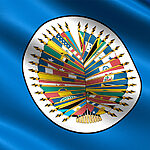The Impact of Climate Change on Human Rights
A famous fairy tale our parents used to tell us when we were children tells the story of a frog immersed in a pot of lukewarm water placed over a fire. The frog, unaware of the danger, finds the water pleasantly warm and continues to splash around happily. After a while, the frog begins to find the water a little too warm and uncomfortable, but still it continues to enjoy its bath. When the water begins to boil, it is too late: the frog no longer has the strength to jump out of the pot and eventually realises that its fate is to end up boiled.
The fable of the boiled frog is the perfect metaphor to describe what is happening to our planet as well as the inevitable outcome if we fail to take action now. Climate change is one of the most urgent threats to our existence, and it extends beyond environmental issues to seriously jeopardizing the enjoyment of some of the most crucial human rights.
How did we end up in the pot?
In the early 1900s, people underestimated the dangers of a rise in the planet’s temperature. Climate change was seen as a remote, abstract risk, and almost no scientific evidence postulated that humans could play a role in the global warming process.
However, with the economic boom that followed the Second World War, the perception towards environmental issues slowly began to change. Deforestation, intensive agriculture, rampant consumerism and above all, the increasing industrial use of fossil fuels, are just some of the factors that contributed significantly to global warming during the post-war years. In the late 1980s, the global temperature rose so dramatically that climate change finally entered the scientific and media debate, and even became a topic of interest on the political agenda.
A key element of international climate change policy-making was the advice provided by hundreds of scientists in the Intergovernmental Panel on Climate Change (IPCC). The Panel was created by the UN in 1989 with the aim of providing a scientific view of climate change and its political and economic impacts.
The work of the IPCC laid the scientific, legal, and political foundations for the signing of the UN Framework Convention on Climate Change (UNFCCC) in 1992, an intergovernmental treaty developed to address the problem of climate change. The UNFCCC was the first real intergovernmental cooperation effort to combat global warming and established a clear strategy to reduce greenhouse gases and to avoid dangerous anthropogenic interference with the climate system.
It goes without saying that the fight against climate change is now squarely on the national and international political agenda, with incentives like “Fridays for Future”, the climate strikes initiated in 2018 by Swedish activist Greta Thunberg.
But public awareness is not enough and there is still much to be done. Our planet is getting dangerously hotter and the list of human rights whose enjoyment is endangered is getting longer and longer.
What could possibly go wrong?
What does climate change have to do with human rights? The answer is very simple: for years it was thought that the rise in global temperature was a purely ecological problem, limited to the protection of the environment, wildlife and ecosystems. On the contrary, it is now universally accepted that climate change is a major factor in preventing or making it difficult for humans to enjoy certain fundamental rights. In other words, it is scientifically proven that there is a causal link between global warming and those natural events undermining the full enjoyment of these rights.
The list of human rights jeopardized by climate change is too vast and complex to be described here. However, it is worth analyzing some areas where the nexus is particularly clear.
First, climate change poses a clear threat to the right to health. According to the World Bank report, Turn down the Heat: Confronting the New Climate Normal, climate change will cause “health impacts that are likely to increase and be exacerbated by high rates of malnutrition, including potential increases in vector-borne diseases and heath-amplified levels of smog that could exacerbate respiratory disorders”. Moreover, the right to health is closely linked to the right to live in a healthy environment. In this regard, the UN Special Report on Human Rights and the Environment clearly explains that this particular right is composed by a variety of different “substantive elements”, including the rights to clean air, a safe climate, access to safe water and adequate sanitation, non-toxic environments in which to work, study and play, and healthy biodiversity and ecosystems.
Speaking of food and water, climate change can have devastating consequences on the fundamental right of peoples to be free from hunger. According to IPCC’s special report Impacts of 1.5°C of Global Warming on Natural and Human Systems, a rise in global temperature of even 2°C could lead to a potential catastrophe, putting between 100 and 400 million of people at risk of hunger. This is without considering extreme events such as droughts and floods, desertification, the salinization of water used for agricultural purposes, and other natural disasters that can lead to the devastation of crops and to a subsequent period of famine.
Another fundamental right which is seriously undermined by climate change is the right to housing. Melting glaciers and the rise in the ocean levels threaten the very existence of some islands and coastal communities below sea level. This in turn challenges the right to self-determination, forcing masses of people to migrate to other countries and continents. It is no coincidence that climate change has created a new category of “climate refugees”. According to the CMCC Observatory on Climate Policies and Futures, the number of climate refugees could grow exponentially in the years to come.
Five more minutes, the water is so warm!
The fact that climate change has a negative impact on human rights may also be the source of the solution to this problem.
For instance, a State has the duty to promote human rights and protect its people against violations of human rights by non-state actors through law, policies and best practices. Public and private companies and corporations involved in commercial activities could be held liable for failing to respect human rights by harming people’s human dignity through their activities or business relationships. By way of example, last year the State of Minnesota filed a lawsuit in state court against the American Petroleum Institute and other fossil fuels companies, alleging that the defendants caused a “climate-change crisis” in the State through a “campaign of deception”. On 13 May 2020, the Australian environmental group Youth Verdict lodged an objection to the Galilee Coal Project in the Queensland Land Court on human rights grounds. The plaintiffs allege that, by contributing to climate change, the mine will infringe their right to life, the protection of children, and the right to culture, as protected by the Queensland Human Rights Act.
Victims of human rights violations need access to effective judicial and non-judicial remedies, and both the State and the international organisations have a role to play in providing access to them.
The protection of human rights is, first and foremost, entrusted to individual States, which should establish valid means of protection in case of violation, in line with what is sanctioned at European and international level by the principle of subsidiarity. According to this principle, action taken at international level is justified in relation to the possibilities offered by action at the national, regional or local level.
It is quite evident that international instruments (such as treaties, conventions etc.) have decisively laid out the procedures to defend human rights with the intention of standardizing their protection in the world. However, only those States which have ratified such international tools and implemented the basic international laws providing for such mechanisms are bound. The challenge to bind the biggest international players is still open.
In addition to hard law, which mainly consists of treaty provisions and case law, the so-called soft law also deserves to be considered in this context: UN declarations, comments from UN treaty bodies and the interpretations from UN special rapporteurs play a fundamental role in the construction of international law. In fact, although the actual scope of legal obligations for any specific country may depend on treaty ratification status, some of these obligations may constitute customary international law that is binding all countries.
We can conclude that States today have the legal obligation to prevent and fight climate change, because this is imposed on them not only by the need to protect the environment and ensure a sustainable future for future generations, but also by customary international law protecting human rights.
A happy ending?
Unfortunately for us, unlike the frog, jumping out of the pot is not a viable option. If we fail, our fate is not so different to getting boiled! We only have this planet to live on and we cannot just let it go and look for somewhere else to live. However, we can do one thing the frog cannot: reach for the switch and turn down the heat! It will not be easy, but human rights are a formidable ally to be relied upon in the fight against climate change.










